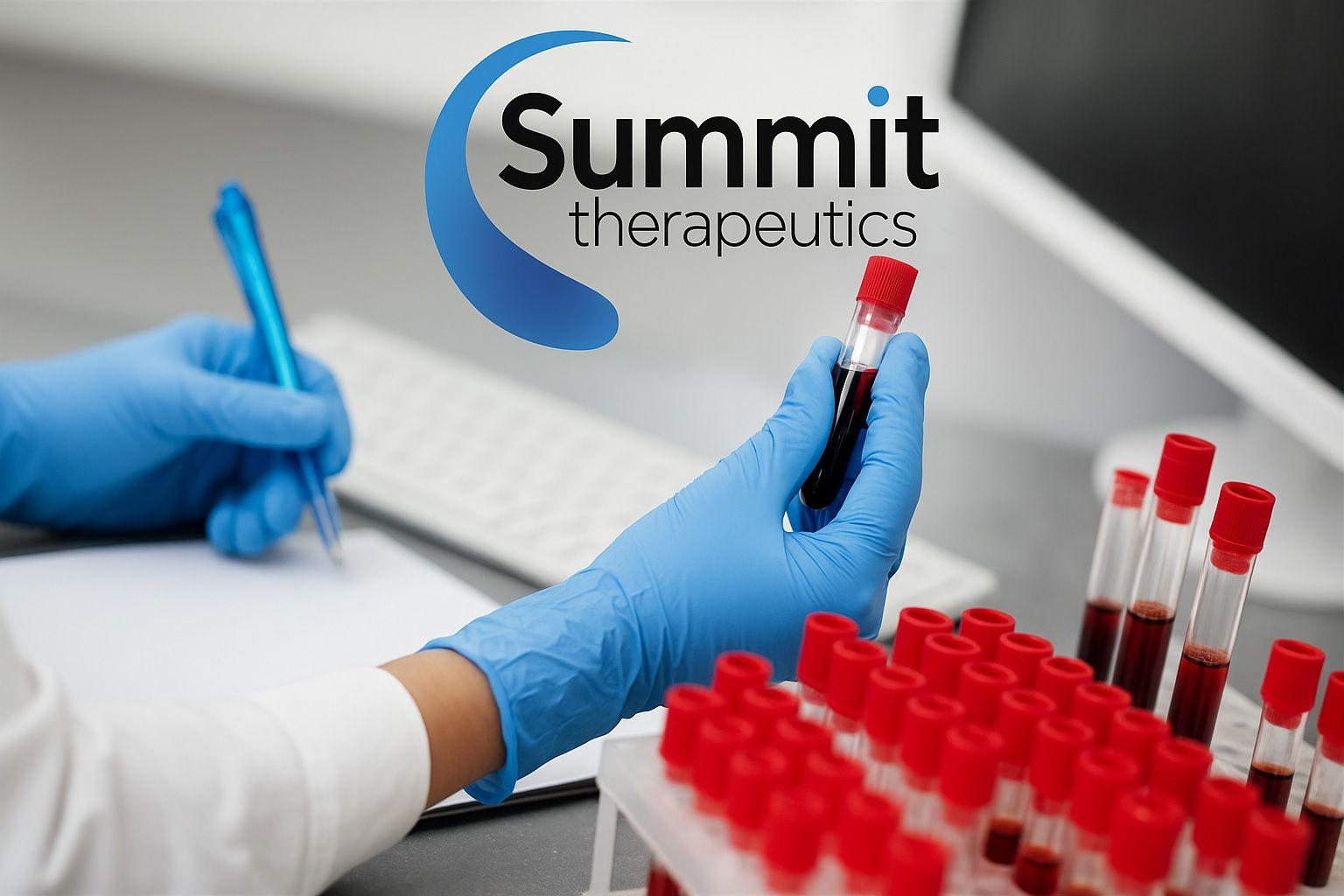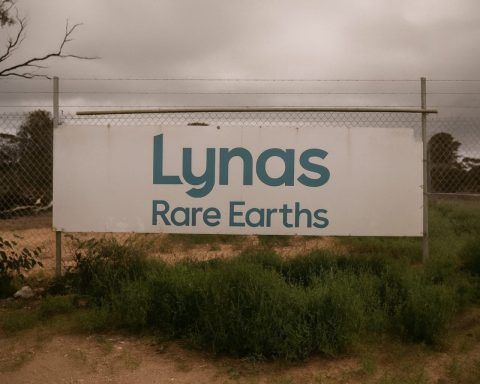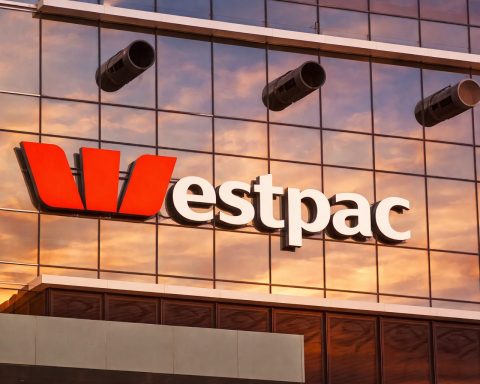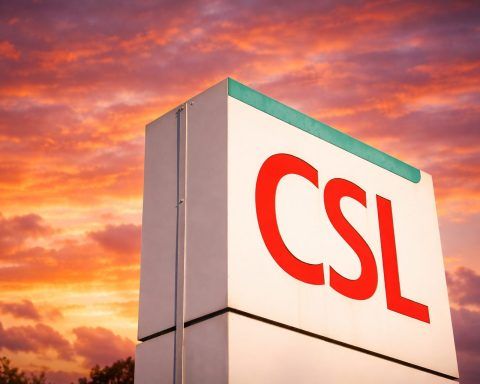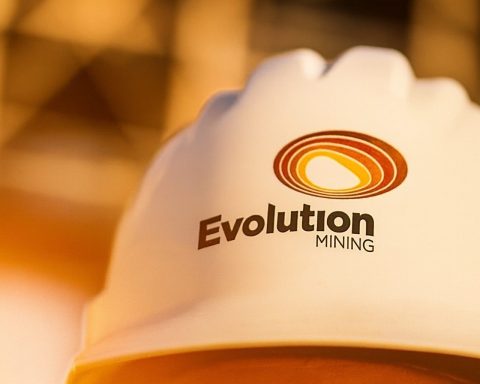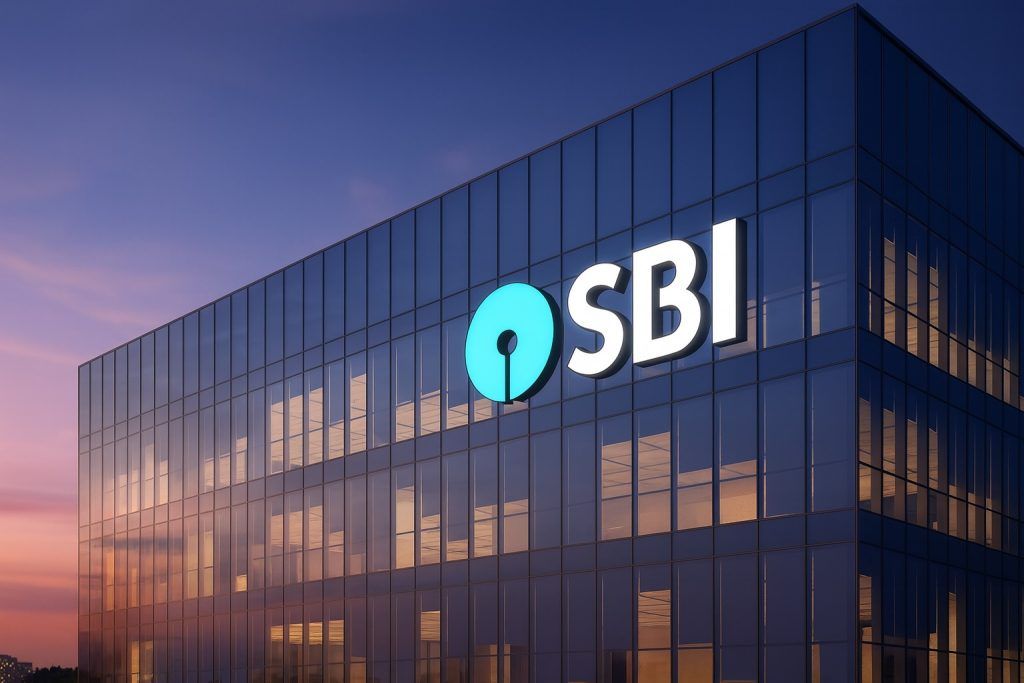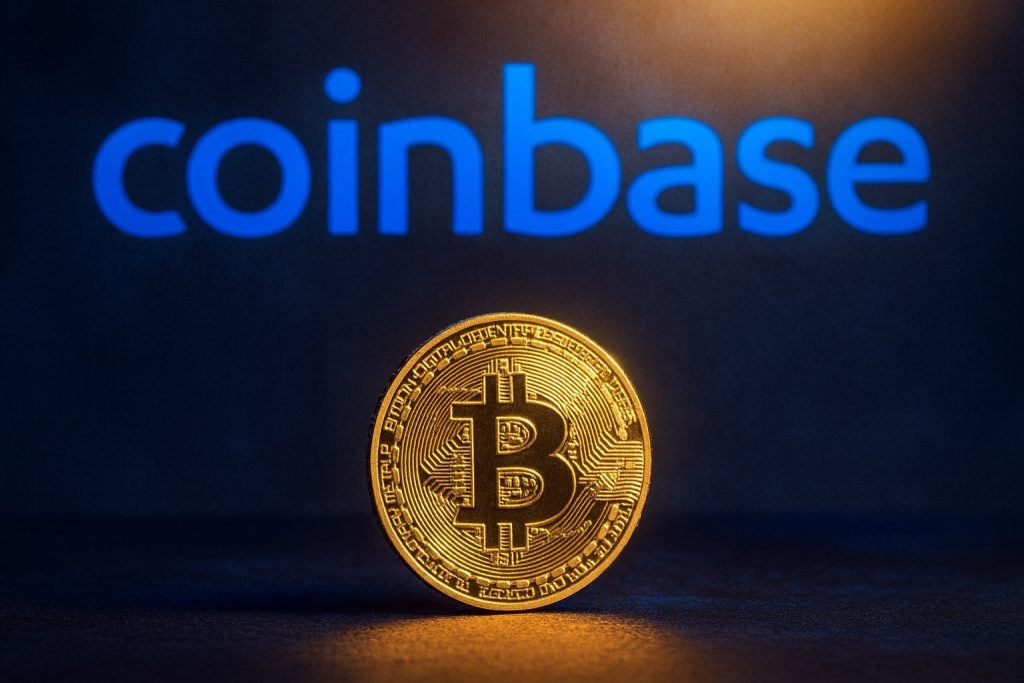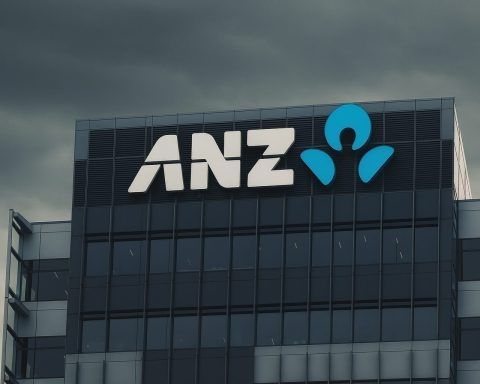- Stock Soars: Summit Therapeutics’ stock closed at $20.99 on Oct. 17, 2025 [1], marking a +16% jump in the past month and roughly +14% year-to-date [2] (though shares dipped ~1–2% last week amid volatility). The company’s market cap now sits around $15.6 billion [3] after an astonishing multiyear run (the stock is up +1,770% over three years [4]).
- Phase 3 Breakthrough: On Oct. 19, Summit reported impressive Phase 3 trial results for its flagship cancer drug ivonescimab. In a first-line lung cancer study run by partner Akeso, ivonescimab + chemotherapy cut the risk of disease progression or death by 40% compared to a standard PD-1 immunotherapy (tislelizumab) plus chemo [5]. This positive outcome, presented at ESMO 2025 (a major oncology conference), is boosting confidence in Summit’s novel bispecific antibody therapy.
- Pipeline Expansion: Summit is rapidly broadening ivonescimab’s reach beyond lung cancer. On Oct. 17, it launched a new Phase 3 trial (“HARMONi-GI3”) in first-line colorectal cancer, pairing ivonescimab with chemotherapy [6]. Earlier this year, Summit also partnered with Revolution Medicines to test ivonescimab alongside cutting-edge RAS inhibitors in RAS-mutant tumors [7] – part of a strategy to extend the drug’s use via collaborations.
- Analyst Sentiment: Despite recent swings, Wall Street is broadly bullish on SMMT. 16 analysts cover Summit with a “Strong Buy” consensus and an average 12-month price target of ~$33.75 (≈61% above current levels) [8]. However, opinions vary widely – targets range from $12 (bearish) to $50 (bullish) [9] – reflecting a divide between skeptics and true believers on Summit’s outlook.
- Upcoming Catalysts:Today (Oct. 20, 2025), Summit is set to report Q3 earnings and host an ESMO data update call [10]. Investors are eager for updates on ivonescimab’s progress and any hints of regulatory or partnership plans. In the coming months, key catalysts include potential FDA feedback on trial designs, additional Phase 3 readouts (e.g. Summit’s global HARMONi lung cancer trial results), and any new partnerships or financing moves – all of which could sway SMMT’s stock trajectory [11].
SMMT Stock’s Wild Ride in 2025
Summit Therapeutics’ share price has been on a roller-coaster ride this year. After a steady climb through late summer, SMMT spiked above $25 intraday in mid-October, then pulled back to end last week just under $21 [12]. The stock fell 4.5% on Friday, Oct. 17 alone [13] as traders braced for the upcoming data presentation and earnings call. Even after that dip, Summit shares remain up solidly in 2025 (low double-digit percent gains) – roughly in line with the broader biotech sector (the SPDR S&P Biotech ETF is ~+20% YTD) [14].
These dramatic swings highlight both the high hopes and high risks around Summit. The company’s market capitalization has ballooned above $15 billion – remarkable for a biotech with no approved products yet [15]. In fact, Summit’s value has leapt over 600% in the past year alone on optimism for ivonescimab [16], and more than +1,700% in three years, catapulting the once-obscure micro-cap into the biotech big leagues [17]. For context, Summit’s current valuation now rivals some mid-cap pharma companies, far exceeding typical pre-revenue biotechs.
Volatility has been intense. In April 2025, Summit’s stock plunged 36% in a single day after Akeso (its partner) unexpectedly released an interim overall survival analysis from a Chinese trial that failed to meet an extremely stringent significance threshold [18]. Then in September, shares tumbled over 25% when Summit’s World Lung Conference update showed an improved survival trend that was not yet statistically significant [19] – sparking investor jitters about ivonescimab’s ultimate benefit. Yet each scare has been followed by a rebound, as additional data and expert analysis provided context. For example, a longer follow-up later showed a nominally significant survival benefit emerging [20], helping validate Summit’s stance that the drug was on the right track. This pattern – surges on breakthrough news, plunges on uncertainties, then partial rebounds as perspective returns – has defined SMMT’s wild ride in 2025 [21].
Breakthrough Cancer Trial Results Fuel Optimism
The latest clinical data unveiled this past weekend has bolstered the bull case for Summit. At the ESMO 2025 oncology conference in Berlin, Summit’s partner Akeso presented full results from a Phase III trial called HARMONi-6, evaluating ivonescimab in patients with advanced squamous non-small cell lung cancer (NSCLC). In this first-line lung cancer study (meaning ivonescimab was given as initial therapy), the results were striking: ivonescimab plus chemotherapy significantly outperformed a standard PD-1 inhibitor (BeiGene’s tislelizumab) plus chemo [22]. Specifically, patients on ivonescimab experienced a 40% lower risk of their cancer progressing or death compared to those on the PD-1 drug regimen [23]. In other words, ivonescimab produced a markedly longer progression-free survival (the time patients live without the disease worsening) than the existing immunotherapy option [24].
This is a notable breakthrough because tislelizumab is an approved PD-1 immunotherapy – a class of drugs that includes Merck’s Keytruda, the dominant first-line lung cancer treatment. Beating an established drug in a head-to-head trial suggests ivonescimab’s unique mechanism may confer a real efficacy edge [25]. Ivonescimab is a bispecific antibody, essentially an “all-in-one” therapy that targets two cancer pathways at once: it blocks PD-1 (releasing the brakes on immune cells to attack tumors) and blocks VEGF (starving tumors of blood supply) simultaneously [26]. In plain terms, it’s like combining a PD-1 checkpoint inhibitor and an anti-angiogenesis drug in a single treatment [27]. The strong HARMONi-6 data indicate that this two-pronged approach can yield potent anti-cancer activity.
Encouragingly, the trial also hinted at an overall survival (OS) benefit with ivonescimab. Patients on ivonescimab had about a 22% lower risk of death than those on the PD-1 drug, according to early data cuts (hazard ratio ~0.78) [28]. While the OS data are not yet fully mature (and longer follow-up is needed to confirm the survival advantage), the positive trend helps ease some concerns raised by earlier interim results [29]. Notably, these Chinese trial findings align with signals from Summit’s own global trial: in Summit’s separate Phase 3 for a different lung cancer subtype (EGFR-mutated NSCLC), ivonescimab plus chemo similarly showed a strong improvement in progression-free survival and a promising (if not yet definitive) overall survival trend that improved over time [30].
If further trials continue to succeed, ivonescimab could emerge as a formidable new entrant in lung cancer therapy, which is one of the world’s largest cancer markets. Summit’s management has hailed the HARMONi-6 outcome as validation of ivonescimab’s potential “first-in-class” status. The data suggest this dual-target immunotherapy might set a new benchmark for certain patients, raising hopes that Summit’s drug could eventually challenge the current standard of care in front-line lung cancer.
Broadening Pipeline and Partnerships
Summit isn’t stopping at lung cancer – the company is aggressively expanding ivonescimab’s pipeline into other tumors and combinations. Last week, Summit announced a new Phase III trial in colorectal cancer, dubbed HARMONi-GI3, to test ivonescimab plus chemotherapy as a first-line treatment for advanced colorectal cancer [31]. This move indicates Summit sees opportunity beyond lung cancer, leveraging ivonescimab’s VEGF-blocking ability in a cancer where anti-VEGF therapy (like Genentech’s Avastin/bevacizumab) is already part of standard care. By launching a late-stage colorectal trial, Summit is effectively adding another “shot on goal” in a major cancer indication, underscoring the company’s confidence in ivonescimab’s broad potential.
The company is also pursuing strategic partnerships to enhance ivonescimab’s reach. In June 2025, Summit partnered with Revolution Medicines to explore ivonescimab in combination with Revolution’s new RAS(ON) inhibitors [32]. RAS mutations (such as KRAS) are notorious drivers of cancer growth in lung and colorectal tumors, and historically have been very difficult to target. Revolution’s compounds aim to directly hit these mutant RAS proteins. The collaboration will test whether pairing a RAS inhibitor with ivonescimab’s PD-1 + VEGF blockade yields synergistic effects in RAS-mutant cancers [33]. It’s a forward-thinking combo: if successful, Summit could open up ivonescimab to hard-to-treat cancer subtypes and do so with a partner sharing the development risk.
It’s worth noting how dramatically Summit’s focus has pivoted in recent years. Not long ago, Summit was known for developing an antibiotic (ridinilazole) for C. difficile infection. But in 2022 that program failed its Phase 3 trial, as ridinilazole could not outperform the standard therapy [34]. Summit’s stock collapsed on that news, and the company reinvented itself by pivoting entirely to oncology – licensing ivonescimab from Akeso in late 2022 and shelving its antibiotic work [35]. As TS2.tech observed, Summit’s saga became a “cautionary tale” of biotech risk, underscoring that even promising Phase 2 results don’t guarantee Phase 3 success [36]. The bold gamble on ivonescimab has so far paid off immensely, transforming Summit into an oncology player almost overnight. But this history is a reminder that biotech fortunes can swing abruptly – a fact not lost on investors even as excitement builds for ivonescimab.
Today, ivonescimab is essentially Summit’s “crown jewel” and sole focus, with multiple trials in lung cancer and beyond. The company’s pipeline strategy leaves room for additional partnerships or even acquisition interest if ivonescimab continues to excel. Indeed, industry chatter has suggested that bigger fish are circling. In July, a Bloomberg report claimed AstraZeneca was in discussions to license ivonescimab in a deal potentially worth up to $15 billion (with a multi-billion upfront payment and milestones) [37]. Summit had also reportedly talked to other pharma giants, and while no agreement has materialized yet (those negotiations were ongoing and could still fall apart) [38], the rumor underscored the level of interest in Summit’s asset. Analysts speculate that if Phase 3 successes keep piling up, Summit could eventually partner with a large pharmaceutical company to co-develop or commercialize ivonescimab – or even become a takeover target itself [39]. So far, Summit has not announced any such deal beyond its Akeso license and the Revolution Medicines collaboration. But any hint of a major partnership could become a significant catalyst (or risk factor) for the stock going forward.
Analysts and Expert Views: Bulls vs. Bears
Wall Street analysts have taken notice of Summit’s ascent, and most are optimistic – but there’s a wide spectrum of opinion. On the bullish end, enthusiasts argue ivonescimab could be a game-changer in oncology, which would justify a far higher valuation if the drug achieves approvals and major sales. The average analyst price target is in the mid-$30s per share [40], implying significant upside from current levels. A number of biotech specialists at smaller firms have issued aggressive targets (in the $40–$50 range) on SMMT [41], essentially betting that Summit will successfully evolve into a commercial-stage cancer company worth tens of billions. Some even model extraordinarily high long-term scenarios – for example, a recent discounted cash flow analysis suggested a theoretical fair value above $180/share in an ultra-bullish case [42]. (Of course, that kind of projection assumes ivonescimab eventually gains wide FDA approvals and generates substantial revenue down the road.)
On the bearish side, skeptics warn that Summit’s stock may have run too far, too fast on hype. In mid-September, Barclays initiated coverage on SMMT with an outright “Sell” rating and a $13 price target [43], signaling doubts about the lofty valuation. The bearish view emphasizes that Summit is still likely years away from FDA approval or any revenue [44]. The company must navigate multiple large Phase 3 trials and prove ivonescimab can replicate its early success in broader populations – a process with no guarantees. Additionally, ivonescimab will face intense competition: the frontline lung cancer market is dominated by Merck’s Keytruda (often used with chemo), and other pharma giants like AstraZeneca and Roche have their own PD-1/PD-L1 immunotherapies and combo regimens [45]. Even if Summit’s drug is excellent, breaking into an entrenched market and persuading doctors to switch could be challenging. Bears also point to traditional valuation metrics – Summit’s stock trades at a sky-high ~60× price-to-book ratio, far above industry norms [46]. In their view, the current $15B market cap already prices in a lot of best-case scenario success. If anything goes awry (delays, negative data, etc.), the downside could be severe. In short, critics ask whether SMMT’s valuation is sustainable, or if the stock’s epic run-up has been overdone [47].
Meanwhile, industry experts and commentators offer a more nuanced perspective. After the April data scare, for instance, analysts at Evercore ISI argued that investors “misinterpreted or underappreciated” the strength of ivonescimab’s interim results [48] – suggesting the panic was premature and that the drug likely just needs time and more data to prove its benefit. Oncology specialists have noted that a ~22% reduction in risk of death against a standard like Keytruda “isn’t an outright failure,” even if it didn’t hit an ultra-strict statistical mark in an interim look, and that it’s “probably too early to write ivonescimab off” based on that alone [49]. In other words, the science remains compelling despite some mixed early signals. At the same time, seasoned analysts caution that Summit’s path forward comes with execution risk: the company must successfully complete its trials, navigate regulatory filings, scale up manufacturing, and likely secure a commercial partner to maximize ivonescimab’s reach [50]. Any stumble – be it a trial delay, a safety issue, or a financing hiccup – could quickly deflate the high expectations built into the stock [51].
For now, momentum and sentiment favor the bulls, given the string of positive trial news. But everyone agrees the next 6–12 months will be critical. As one biotech observer quipped, Summit has essentially “bought itself time and opportunity” with these trial wins, and now it must “execute and earn the market’s confidence” going forward [52]. In short, the company has to deliver on the promise it has shown, to turn investor excitement into lasting shareholder value.
Outlook: High Stakes into 2026
Heading into late 2025, Summit Therapeutics finds itself at a pivotal inflection point. The company’s achievements this year – multiple Phase 3 victories, pipeline expansions, and a solid cash runway – have set the stage for a potential FDA filing in NSCLC by 2026 if all goes well [53]. Management’s tone remains upbeat; they’ve publicly stated ambitions to “change the treatment paradigm” in EGFR-mutated lung cancer and beyond, positioning ivonescimab as a next-generation backbone therapy in oncology [54]. To bridge the gap from clinical success to market success, analysts point to several factors to watch in the coming months:
- Regulatory Path: Summit will likely seek expedited FDA pathways (such as Breakthrough Therapy designation) for ivonescimab, given the significant need in lung cancer. Any guidance from regulators on what data is required – especially demonstrating an overall survival benefit – will be crucial [55]. The timeline for a U.S. approval is still uncertain, but if upcoming data remain strong, Summit could potentially file its first Biologics License Application (BLA) sometime in 2026 for a lung cancer indication [56]. Investors will be watching the Oct. 20 data call and future announcements for hints of FDA interactions or filing plans.
- Competitive Landscape: How Summit fares against rival drugmakers will be a key determinant of its ultimate success. Major players like Merck and AstraZeneca are not standing still – they continue to test new combinations (for example, adding TIGIT or other novel immunotherapy agents on top of PD-1 blockers) to extend their dominance in lung cancer [57]. Summit’s advantage is that it has a head start in the PD-1 + VEGF bispecific niche, but at least one Chinese competitor (Junshi Biosciences) is reportedly developing a similar dual-action antibody [58]. Moreover, Summit’s partner Akeso could eventually become a competitor in regions where Summit lacks rights. To secure ivonescimab’s place if approved, Summit will need to execute a savvy commercial strategy – potentially partnering with a larger pharma company – to navigate this competitive landscape [59].
- Finances: As a clinical-stage biotech with no product revenue (yet), Summit will continue burning cash to fund its trials. The company had over $500 million in cash as of mid-2025 [60], thanks in part to past fundraisings tied to the Akeso deal. However, ongoing Phase 3 studies are expensive, and unless ivonescimab reaches the market relatively soon, additional funding may be needed by 2026 [61]. Summit’s largest backer – billionaire CEO Robert Duggan – has shown willingness to inject capital to propel development. Still, any new share issuance or financing deal will be scrutinized, since it could dilute existing shareholders [62]. Investors will also welcome any non-dilutive funding (for instance, an upfront payment from a commercialization partner) as a sign of confidence in the program.
In summary, Summit Therapeutics now stands as one of 2025’s biotech success stories, rising from near-obscurity to a $15 billion oncology contender [63]. The company’s stock has delivered headline-grabbing rallies – and stomach-churning plunges – reflecting the stakes at play: enormous potential rewards tempered by significant clinical and commercial uncertainties [64]. The next few days will offer important clues to Summit’s trajectory, with the ESMO data call and earnings update expected to shed more light on ivonescimab’s progress and the road ahead [65]. If the new data impress and management provides encouraging guidance, SMMT shares could regain upside momentum. Conversely, if new questions or concerns emerge, the volatility may persist [66]. As TS2.tech’s analysts put it, Summit essentially offers a “high-risk ‘lottery ticket’ on a much-needed medical breakthrough, paired with the downside risk of further dilution or trial failure” [67]. In the near term, all eyes are on today’s call (Oct. 20) to see how the next chapter of this dramatic biotech saga unfolds.
Sources: Summit Therapeutics press releases [68] [69]; TS2.tech analysis [70] [71] [72] [73]; Investing.com [74]; StockAnalysis data [75]; Oncologypipeline [76] [77]; Simply Wall St. [78]; Yahoo Finance (XBI index) [79].
References
1. ts2.tech, 2. ts2.tech, 3. ts2.tech, 4. ts2.tech, 5. ts2.tech, 6. ts2.tech, 7. ts2.tech, 8. ts2.tech, 9. ts2.tech, 10. ts2.tech, 11. ts2.tech, 12. ts2.tech, 13. ts2.tech, 14. ts2.tech, 15. ts2.tech, 16. ts2.tech, 17. ts2.tech, 18. ts2.tech, 19. ts2.tech, 20. ts2.tech, 21. ts2.tech, 22. ts2.tech, 23. ts2.tech, 24. ts2.tech, 25. ts2.tech, 26. ts2.tech, 27. ts2.tech, 28. ts2.tech, 29. ts2.tech, 30. ts2.tech, 31. ts2.tech, 32. ts2.tech, 33. ts2.tech, 34. ts2.tech, 35. ts2.tech, 36. ts2.tech, 37. au.investing.com, 38. au.investing.com, 39. ts2.tech, 40. ts2.tech, 41. ts2.tech, 42. ts2.tech, 43. ts2.tech, 44. ts2.tech, 45. ts2.tech, 46. ts2.tech, 47. ts2.tech, 48. ts2.tech, 49. ts2.tech, 50. ts2.tech, 51. ts2.tech, 52. ts2.tech, 53. ts2.tech, 54. ts2.tech, 55. ts2.tech, 56. ts2.tech, 57. ts2.tech, 58. ts2.tech, 59. ts2.tech, 60. ts2.tech, 61. ts2.tech, 62. ts2.tech, 63. ts2.tech, 64. ts2.tech, 65. ts2.tech, 66. ts2.tech, 67. ts2.tech, 68. www.biospace.com, 69. www.biospace.com, 70. ts2.tech, 71. ts2.tech, 72. ts2.tech, 73. ts2.tech, 74. au.investing.com, 75. ts2.tech, 76. ts2.tech, 77. ts2.tech, 78. ts2.tech, 79. ts2.tech
